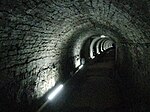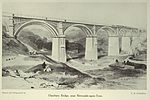Byker railway station
Disused railway stations in Tyne and WearFormer North Eastern Railway (UK) stationsPages with no open date in Infobox stationRailway stations in Great Britain closed in 1954Railway stations in Great Britain opened in 1884 ... and 1 more
Use British English from October 2015

Byker was a railway station on the Riverside Branch, which ran between Byker and Willington Quay. The station served Byker in Newcastle upon Tyne. The station was opened as an unadvertised halt in 1884 by the North Eastern Railway. It was later opened to the public on 1 March 1901. Prior to opening to the public, the station was known as Byker Platform. The station was located on Roger Street off Heaton Park Road. Due to the station's proximity to nearby Heaton, ticket sales for Byker were, for most of the station's life, credited to Heaton.
Excerpt from the Wikipedia article Byker railway station (License: CC BY-SA 3.0, Authors, Images).Byker railway station
South View West, Newcastle upon Tyne Battle Field
Geographical coordinates (GPS) Address Nearby Places Show on map
Geographical coordinates (GPS)
| Latitude | Longitude |
|---|---|
| N 54.9775 ° | E -1.5863 ° |
Address
Morrisons Car Park
South View West
NE6 5PP Newcastle upon Tyne, Battle Field
England, United Kingdom
Open on Google Maps










